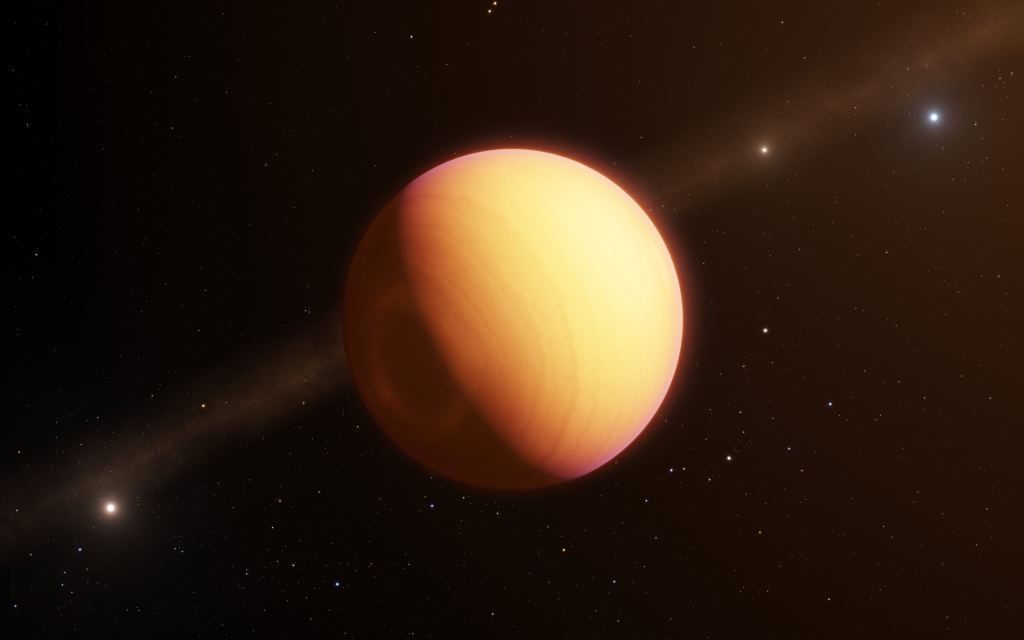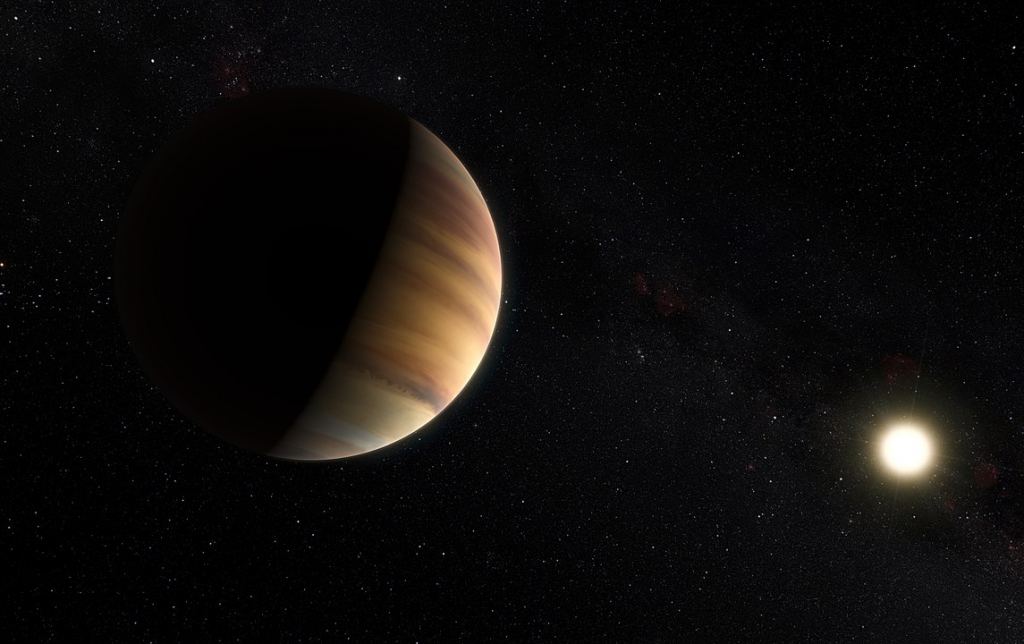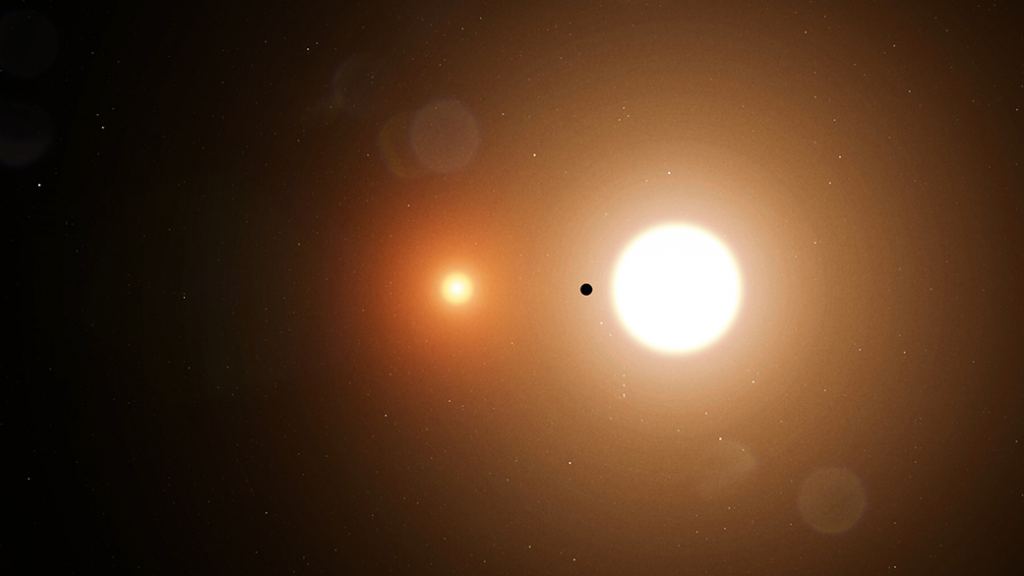You could say that the study of extrasolar planets is in a phase of transition of late. To date, 4,525 exoplanets have been confirmed in 3,357 systems, with another 7,761 candidates awaiting confirmation. As a result, exoplanet studies have been moving away from the discovery process and towards characterization, where follow-up observations of exoplanets are conducted to learn more about their atmospheres and environments.
In the process, exoplanet researchers hope to see if any of these planets possess the necessary ingredients for life as we know it. Recently, a pair of researchers from Northern Arizona University, with support from the NASA Astrobiology Institute's Virtual Planetary Laboratory (VPL), developed a technique for finding oceans on exoplanets. The ability to find water on other planets, a key ingredient in life on Earth, will go a long way towards finding extraterrestrial life.
The research was conducted by postdoctoral researcher Dominick J. Ryan, a postdoctoral researcher at Northern Arizona University (NAU), and Tyler D. Robinson - an Assistant Professor of Astronomy and Planetary Science at NAU and the NASA Astrobiology Institute. The study that described their findings, titled " Detecting Oceans on Exoplanets with Phase-Dependent Spectral Principal Component Analysis," recently appeared online and is being considered for publication by *The Planetary Science Journal*.
When it comes to exoplanet characterization, the most promising technique is the Transit Method (aka. Transit Photometry). This consists of monitoring stars for periodic dips in brightness, which are indications of planets passing in front of their parent stars (relative to the observer). At times, astronomers are also able to obtain spectra as light passes through the transiting planet's atmosphere, revealing things about its chemical composition. But as Prof. Robinson told Universe Today via email, this method doesn't allow for surface observations:
"For now, our best techniques for characterizing rocky exoplanets do not tell us much about the surface environments for these worlds (including whether liquid water is present). For Hubble (and the soon-to-launch JWST), we use transit spectroscopy to characterize the atmospheres of exoplanets - looking for very slight changes in the brightness and color of a host star when a planet traverses its disk. In this geometry/setup, the very long paths the light takes through the atmosphere (most analogous to viewing the Sun at sunset on Earth) means that the deep atmosphere (and surface) is obscured."
In the near future, this situation is expected to change considerably, thanks to next-generation instruments like the James Webb Space Telescope* (JWST), and ground-based observatories like the Extremely Large Telescope* (ELT). Thanks to their sophisticated optics, coronographs, and spectrometers, these telescopes will be able to directly image smaller exoplanets that orbit more closely to their stars (which is where potentially habitable rocky planets are more likely to be found).
This method consists of observing the light directly reflected by an exoplanet's atmosphere or surface, which can yield valuable insight into the planet's climate and surface environment. In addition to the JWST and ELT, there are numerous proposed missions that will have the necessary resolution and sensitivity to detect surface features based on atmospheric composition, identify vegetation, evidence of photosynthesis, and maybe even discern the presence of artificial lights!
For the sake of their study, Ryan and Dr. Robinson considered how next-generation instruments could conduct direct imaging studies of exoplanets that would reveal the presence of surface water. The key to this, said Dr. Robinson, is to look for "red crescents":
"Mission concepts are currently under consideration that would provide these types of data - HabEx and LUVOIR being the prime examples. In the same way that sunlight glinting off the ocean when viewing a sunset from a beach on Earth looks quite red, we proposed that glinting oceans on exoplanets could cause the entire planet to appear very red at crescent phases. "If the famous Pale Blue Dot photo had been taken of Earth when it was a narrow crescent, it wouldn't have been blue at all - it would have been red! So, by looking for signs that a potentially Earth-like exoplanet becomes very reflective and red at crescent phases, we might be able to make a detection of an ocean on that world."
Since no spacecraft observations of Earth exist for the crescent phases and wavelengths that were needed to test this method, Ryan and Dr. Robinson relied on a series of simulations of Earth's brightness. These simulations accounted for all of the realistic effects caused by the reflection of Sunlight by surface water - from ocean glint and clouds to atmospheric and surface reflection.
"These simulations showed that, when Earth is viewed at more crescent-like phases, it does indeed become red and reflective," said Dr. Robinson. "Using tools that mimicked how a distant Earth would appear to a HabEx- or LUVOIR-like mission, we showed that just a few observations of an Earth-like world taken over a few different phases (spanning near-full phase to crescent phases) would reveal a crescent-phase reddening indicative of oceans."
As Dr. Robinson explained, this technique will not apply to the JWST but will be possible with future missions. These include the aforementioned Habitable Exoplanet Observatory (HabEx), a space telescope designed for direct image studies of Earth-like planets around Sun-like stars; and the Large UV/Optical/IR Surveyor (LUVOIR), a large aperture, multi-wavelength observatory that will accomplish a wide array of science goals.
In the end, said Dr. Robinson, this study provides a "well-defined avenue" for future direct imaging studies aimed at the characterization of exoplanets. "Part of the hunt for extraterrestrial life is understanding how common it is for rocky worlds to have habitable conditions (surface oceans, at least for exoplanets) - as habitable worlds are also our best targets for hunting for biosignatures," said Dr. Robinson. "So, we've helped solve a piece of the puzzle for how to spot worlds where we think life could arise!"
*Further Reading: arXiv*
 Universe Today
Universe Today



